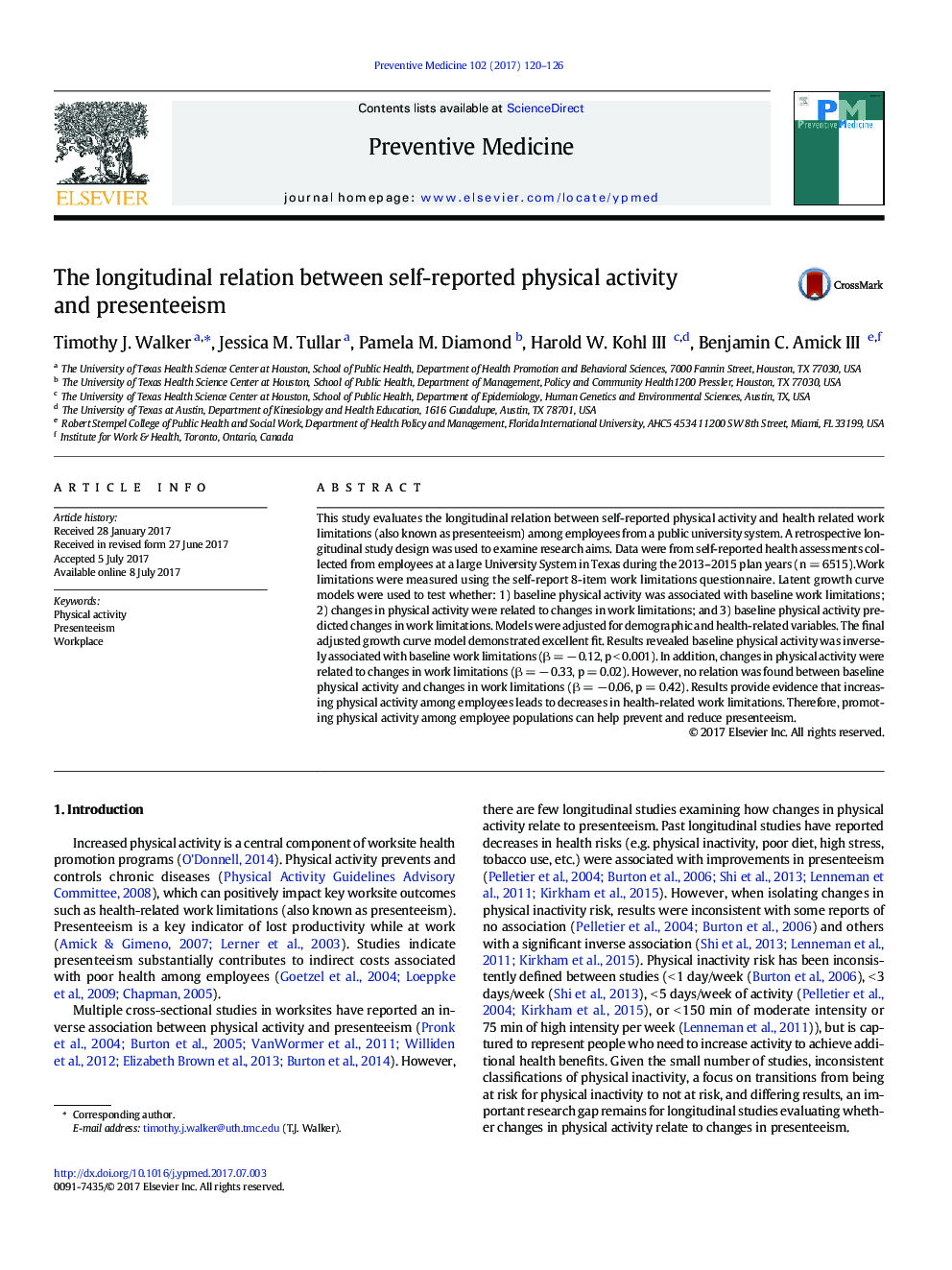| Article ID | Journal | Published Year | Pages | File Type |
|---|---|---|---|---|
| 5635577 | Preventive Medicine | 2017 | 7 Pages |
â¢Baseline physical activity was inversely related to baseline work limitations.â¢Baseline physical activity levels do not predict changes in work limitations.â¢Changes in physical activity were related to changes in work limitations.
This study evaluates the longitudinal relation between self-reported physical activity and health related work limitations (also known as presenteeism) among employees from a public university system. A retrospective longitudinal study design was used to examine research aims. Data were from self-reported health assessments collected from employees at a large University System in Texas during the 2013-2015 plan years (n = 6515).Work limitations were measured using the self-report 8-item work limitations questionnaire. Latent growth curve models were used to test whether: 1) baseline physical activity was associated with baseline work limitations; 2) changes in physical activity were related to changes in work limitations; and 3) baseline physical activity predicted changes in work limitations. Models were adjusted for demographic and health-related variables. The final adjusted growth curve model demonstrated excellent fit. Results revealed baseline physical activity was inversely associated with baseline work limitations (β = â 0.12, p < 0.001). In addition, changes in physical activity were related to changes in work limitations (β = â 0.33, p = 0.02). However, no relation was found between baseline physical activity and changes in work limitations (β = â 0.06, p = 0.42). Results provide evidence that increasing physical activity among employees leads to decreases in health-related work limitations. Therefore, promoting physical activity among employee populations can help prevent and reduce presenteeism.
